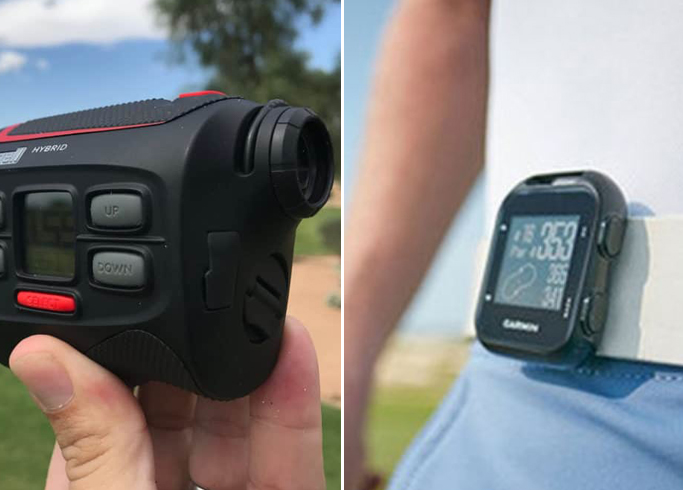
If you ask your golf buddy their average golf driving distance, they will likely give you a higher number. Chances are that they aren’t exaggerating their statistics; they simply don’t know the actual distance.
When it comes to estimating the average golf driving distance by age, most people assume that it increases with your experience. There are other people who swear by the opposite. That your driving distance declines as you get older because your muscles aren’t as strong as they once were, and you start slowing down.
So, which theory is true? Well, the truth is that you can only understand your game changes by examining the average golf driving distance by age. This will ultimately give you a competitive advantage on the course.
Few things are as thrilling as driving your golf ball far; it automatically gives you bragging rights. This is why most golfers are attached to their driver because they know it’s the most powerful club in their bag. You should, however, note that owning a drivers club doesn’t automatically translate into a high driving distance. There are three main factors that come into play; age, gender, handicap.
Based on an article by the BBC Trusted Source Golf participation up 2.3 million in UK and Ireland - and must be seized upon, says R&A - BBC Sport An extra 2.3 million players played golf in the UK and Ireland in 2020 – leading the R&A to urge the sport to build on those figures. www.bbc.com , the average age of playing golf is 41 years. This is a 5 year age decline which shows that more young people are joining the sport.
There are several factors that facilitate or hinder your average driving distance, and age is the most prominent one. As you age, your average distance predictably declines, and statistics reveal that the peak distance is often experienced at 23 years, after which it slowly declines and only starts increasing at around 50 to 70 years. It’s also not shocking that your good shot distance and carry distance also decline at the same rate.
Interestingly, the driving distance between golfers in their 20s and 30s doesn’t display much difference. But to be fair, most people only start losing their hand speed and flexibility in their 40s. Once you hit 40, you start losing an average of 1 yard per driving distance.
You should, however, note that there are other factors that could cause your driving distance to reduce much sooner. For instance, if you have health problems such as arthritis, this will impact your hand speed. The same is also true for repetitive stress injuries that are common among golfers.
In a nutshell, golfers between 20 and 30 years hit 238 yards, 30-40 years range at 231 yards, 40-50-year-olds average at 220 yards, 50-60 years hit at around 211 yards, while golfers above 60 years average at 196 yards.
The average driver distances highlighted above are for both males and females. Your gender, however, impacts your statistics. Generally, men have a higher average driver distance compared to men, and this trend has remained steady throughout the years.
For instance, in 2018, men’s average driving distance was 226.1 yards while that of women was 167.4 yards. In 2018, men hit 225.1 yards while women had an average driver’s distance of 168.5 yards. In 2019, both genders experienced a decline in their average distance, with men hitting 223.4 yards and women 166.4 yards.
An article by the Telegraph Trusted Source The power revolution: why women's golfers are driving further than ever The longest driver on the LPGA Tour now averages 300 yards off the tee as new training regimes offer female golfer’s a new dimension www.telegraph.co.uk , however, highlighted that women are improving their game, and they are now driving for longer distances than they ever have. In fact, the LPGA tour recorded the longest driving distance by a woman at 300 yards.
You should, however, note that gender doesn’t automatically mean your driving distance will be low; there are also other factors that come into play, including experience and playing technique.
Handicap also plays a huge role in your average driving distance. If you’re unsure of what handicap means in golf, it’s a term used to show how your game compares to others. This then helps you look for suitable opponents whose handicap is similar to yours to ensure that competition is fair. Generally, you should aim for a lower handicap.
The average driving distance for golfers whose average handicap is less than 5 is 250 yards. Those whose average handicap ranges between 5 and 10 have hit around 231 yards, and those with a handicap of 10 to 19 average at 215 yards. Players with an average handicap of 19 to 28 have an average driving distance of 195 yards, while those with a handicap of more than 28 hit a distance of 177 yards.
Here’s a quick summary of how your average driving distance is impacted by age.
| Age | Average Handicap | Average Distance |
| 20-29 | 13.7 | 243 yards |
| 30-39 | 14.7 | 241 yards |
| 40-49 | 13.7 | 232 yards |
| 50-59 | 13.5 | 224 yards |
| 60-69 | 14.7 | 212 yards |
| >70 | 15.8 | 196 yards |
If you’d like to keep tabs on your average golf driving distance, you should invest in a golf range finder. There are several models in the market, and you can easily get a golf rangefinder under $100 and a golf rangefinder under $200.
According to multiple reviews, the PXG NX10 Precision Pro is one of the top options. It comes in an updated design that allows it to track distances over sloped surfaces and has a very high laser speed. This model is also quick and precise and has a range distance of around 1000 yards. It has a lifetime battery replacement which speaks volumes about its quality.
Alternatively, you could get the Vortex Optics Impact Laser Rangefinder which comes highly recommended. It has an intuitive design that has angle compensation features and comes with multi-coated optics that come in handy when you’re playing in low-light settings. This range finder also allows you to set your distance in meters or yards and can give continuous readings on a moving target.
Yes!
Men generally have higher driving distances compared to women, and this can be attributed to several factors, including overall muscle mass, weight, and height. Females often drive the ball around 67 yards lower than their male counterparts. If you’re male, you should, however, note that gender alone does not automatically translate to lower driving distances. Women have been known to beat men at their own game, especially when they have experience and flawless technique.
Even though driving the golf ball is only a small element of golf games, it’s undoubtedly one of the most fun. So, here are the top tips you can use to increase your driving distance.
Other tips include;
Statistics show that average golf driving distance by age keeps declining as you grow older. This can be attributed to a loss of muscle strength and hand speed. There are also other factors that determine your average golf driving speed, such as your gender and handicap. Men hit further than women, as do packers with a low handicap. You should note that in addition to these three factors, your experience and golfing technique also impact your game.





